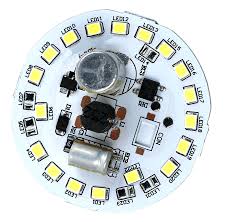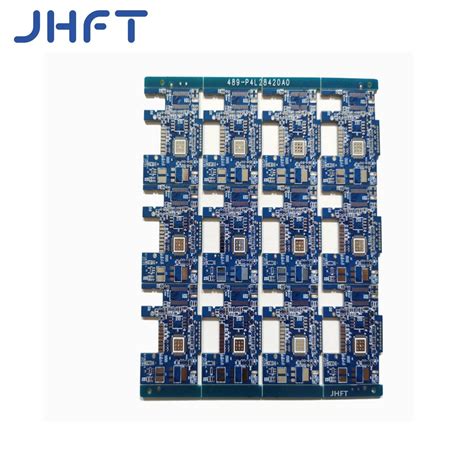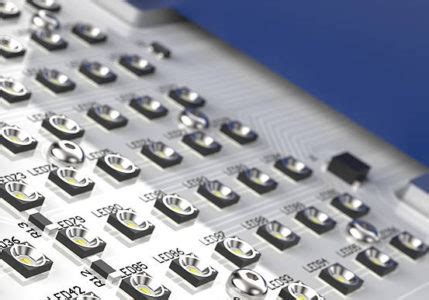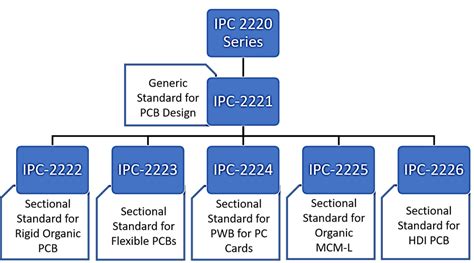Maximizing Thermal Efficiency with Metal Core PCBs
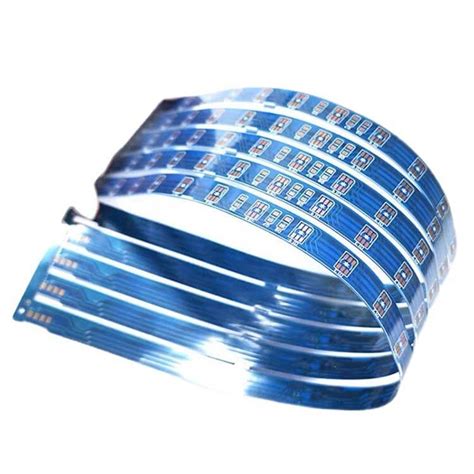
Key Takeaways
When working with high-power electronics, managing heat effectively becomes your top priority. Traditional FR4 boards often struggle with thermal dissipation, leading to performance issues and reduced component lifespan. This is where metal core PCBs shine—their aluminum substrate acts as an integrated heat sink, channeling thermal energy away from critical components up to 10x faster than standard materials.
Choosing the right PCB manufacturing companies impacts both performance and PCB manufacturing cost. Aluminum-core designs reduce the need for additional cooling hardware, lowering system weight by up to 30% in applications like automotive LED lighting or industrial motor controllers. However, optimizing these boards requires balancing thermal conductivity with dimensional stability—a challenge solved by advanced dielectric layers that prevent warping under thermal stress.
For businesses evaluating the PCB manufacturing business case, consider this: while initial material costs for metal cores are 15–20% higher than FR4, the long-term savings from improved reliability and reduced failure rates often justify the investment. Designers should collaborate closely with manufacturers to refine trace layouts and via placements, ensuring heat spreads evenly without creating localized hotspots.
Looking ahead, innovations like hybrid copper-aluminum substrates and laser-drilled microvias are pushing the boundaries of what’s possible. If you’re sourcing these boards, partners like Andwin PCB offer expertise in tailoring solutions for high-current environments, from EV battery management systems to aerospace power converters.
Remember: every design choice—from substrate thickness to solder mask type—affects thermal performance. By prioritizing PCB manufacturing techniques that align with your application’s heat dissipation needs, you create systems that stay cooler, last longer, and deliver consistent power where it matters most.

Thermal Management Challenges in High-Power Electronics
When designing high-power electronic systems, managing heat isn’t just an afterthought—it’s a critical factor that determines reliability and longevity. High-density circuits and power-hungry components generate significant thermal energy, which, if not dissipated efficiently, can lead to premature failure, signal degradation, or even safety hazards. Traditional PCB manufacturing approaches using FR4 substrates often fall short here, as their low thermal conductivity (0.3–0.4 W/mK) creates bottlenecks in heat transfer.
Tip: For applications like motor drives or power converters, prioritize substrates with thermal conductivity exceeding 1.0 W/mK to avoid hotspots.
This challenge becomes more pronounced when scaling up production. While PCB manufacturing companies can optimize FR4 boards for basic applications, high-power designs demand materials that balance electrical performance with heat dissipation. Here’s where metal core PCBs shine: aluminum substrates, for example, offer thermal conductivity up to 220 W/mK, redirecting heat away from sensitive components. However, integrating metal cores introduces new considerations for PCB manufacturing cost and design flexibility.
| Design Factor | FR4 PCBs | Aluminum Core PCBs |
|---|---|---|
| Thermal Conductivity | 0.3–0.4 W/mK | 1.5–220 W/mK |
| Max Operating Temperature | 130°C | 150–300°C |
| Component Lifespan | 3–5 years (under stress) | 7–10+ years |
| Relative Cost | Low | Moderate to High |
Balancing these trade-offs requires collaboration with experienced PCB manufacturing business partners. For instance, while aluminum cores reduce thermal resistance, their higher material cost can impact budgets. Yet, the long-term savings from fewer failures often justify the initial investment. You’ll also need to account for coefficient of thermal expansion (CTE) mismatches—metal cores expand differently than copper layers, which demands precise layer bonding techniques.
“In high-power designs, thermal management isn’t optional. Choosing the right substrate is the first step in building systems that survive real-world stresses.” – Industry Expert
Ultimately, overcoming these challenges hinges on aligning material choices with operational demands. Whether optimizing PCB manufacturing cost or ensuring dimensional stability under thermal cycling, every decision must prioritize heat dissipation without compromising electrical integrity.
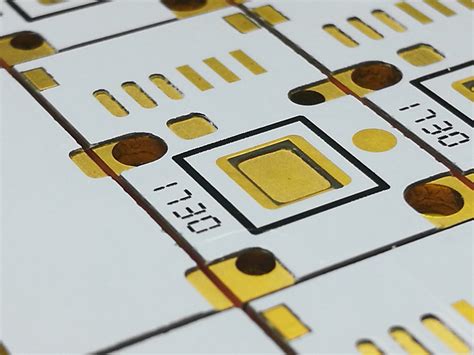
Aluminum Core PCBs: Advantages Over Traditional FR4 Boards
When designing high-power electronic systems, you’ll quickly realize that traditional FR4 boards struggle to meet modern thermal demands. This is where aluminum core PCBs shine, offering distinct advantages that extend far beyond basic circuit connectivity. Unlike FR4 substrates, which rely on fiberglass-reinforced epoxy, aluminum-core designs integrate a thermally conductive metal layer—typically aluminum—to address heat dissipation challenges at their root.
One of the most significant benefits lies in thermal conductivity. While FR4 materials manage a modest 0.3–0.4 W/mK, aluminum substrates deliver 1.0–2.2 W/mK, effectively redirecting heat away from sensitive components. This reduces hotspots and minimizes the need for bulky heatsinks, directly impacting pcb manufacturing cost by simplifying thermal management systems. For pcb manufacturing companies, this translates to leaner production workflows and improved reliability in applications like LED lighting or motor controllers.
Weight reduction is another critical advantage. Aluminum’s high strength-to-weight ratio allows thinner substrate layers compared to FR4, trimming up to 30% of the board’s mass without compromising structural integrity. This becomes vital in industries like aerospace or automotive electronics, where every gram affects fuel efficiency or payload capacity. When sourcing from pcb manufacturing business partners, you’ll find that aluminum-core designs often justify their marginally higher material costs through downstream savings in assembly and logistics.
Durability under thermal stress further separates these substrates from conventional options. FR4’s coefficient of thermal expansion (CTE) mismatch between copper traces and the base material can lead to delamination during repeated heating cycles. Aluminum-core boards, with their closer CTE alignment to copper, maintain solder joint integrity even in environments with rapid temperature fluctuations—a key consideration for pcb manufacturing in automotive power modules or industrial automation systems.
However, adopting this technology requires careful planning. The dielectric layer in metal-core PCBs introduces unique design constraints, particularly in high-frequency applications. Leading pcb manufacturing companies now combine aluminum substrates with advanced ceramic-filled dielectrics to balance thermal performance with electrical insulation needs, ensuring stable operation in multi-layer configurations.
As you evaluate board material options, consider how aluminum-core solutions align with your system’s power density requirements. While FR4 remains cost-effective for low-power applications, the long-term reliability and efficiency gains of metal-core designs often outweigh initial investment concerns—especially when partnering with pcb manufacturing specialists who optimize layer stackups for your specific thermal and electrical parameters.
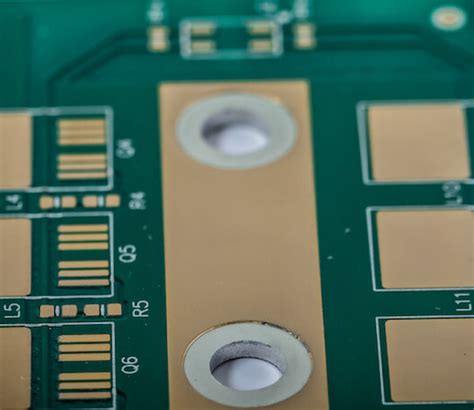
Design Techniques for Optimal Heat Dissipation in Metal Core PCBs
When working with metal core PCBs, achieving efficient heat dissipation requires balancing material properties, layer configurations, and geometric precision. Unlike standard FR4 boards, aluminum or copper substrates inherently offer higher thermal conductivity—but leveraging this advantage demands strategic design choices. Start by selecting the appropriate substrate thickness based on your power density requirements. Thicker metal cores (e.g., 1.5–3.0 mm aluminum) excel in high-power applications, while thinner variants reduce pcb manufacturing cost and component weight without sacrificing performance.
Thermal via placement is another critical factor. Arranging vias in a grid pattern beneath heat-generating components, such as LEDs or power transistors, creates direct pathways for heat to transfer from the circuit layer to the metal base. Pair this with a thermally conductive dielectric layer (3–8 W/mK) to minimize thermal resistance. However, over-optimizing for heat dissipation can compromise dimensional stability—collaborate with experienced pcb manufacturing companies to simulate thermal expansion coefficients and avoid warping during operation.
Copper thickness in the circuit layer also plays a role. While thicker copper (2–6 oz) improves current handling, it can trap heat if not paired with adequate spacing between traces. Use software tools to model thermal hotspots and adjust trace widths or spacing accordingly. For designs requiring ultra-low thermal resistance, consider hybrid stacks: combining a metal core with ceramic-filled prepreg layers enhances heat spreading while maintaining rigidity.
Cost efficiency remains a priority in pcb manufacturing business models. To balance budgets, opt for standardized metal core sizes offered by manufacturers, which reduce material waste. Additionally, consolidate multiple heat-sensitive components into zones served by shared thermal vias or heat sinks. This minimizes the need for complex, costly layouts without compromising cooling efficacy.
Finally, validate your design through prototyping. Reputable pcb manufacturing partners provide thermal imaging tests to identify inefficiencies before mass production. Iterative adjustments—like refining the metal core’s surface finish or dielectric material—can yield 15–20% improvements in heat dissipation with minimal cost increments. By integrating these techniques, you ensure that metal core PCBs meet both thermal and operational demands, even in the most demanding environments.
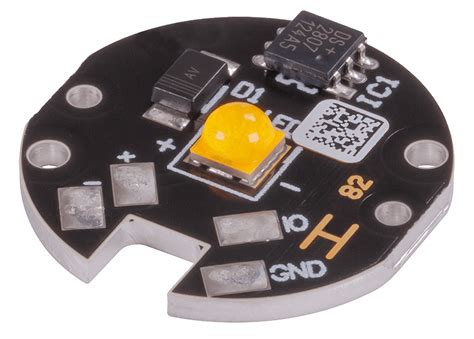
Applications of Metal Core PCBs in LED and Automotive Industries
When designing high-performance systems for lighting or automotive electronics, you’ll find metal core PCBs playing a pivotal role in overcoming thermal bottlenecks. In LED applications, where heat generation directly impacts luminosity and lifespan, aluminum-core boards excel by channeling heat away from densely packed diodes. This thermal efficiency allows PCB manufacturing companies to deliver solutions for commercial lighting, streetlights, and high-brightness displays—applications where traditional FR4 boards would falter under prolonged thermal stress. By integrating metal cores, you reduce the need for bulky heat sinks, streamlining both PCB manufacturing cost and end-product design.
The automotive sector takes this advantage further. Modern vehicles demand electronics that withstand extreme temperatures, vibrations, and power fluctuations. Here, metal core PCBs prove indispensable in LED headlights, power converters, and battery management systems (BMS) for electric vehicles. For instance, aluminum substrates in adaptive headlights prevent overheating while maintaining precise beam control, even in compact assemblies. Similarly, in EV charging systems, these boards ensure stable performance by dissipating heat from high-current components. This reliability makes them a priority for PCB manufacturing businesses aiming to meet automotive-grade certifications like AEC-Q102.
What sets these applications apart is how PCB manufacturing techniques balance material innovation with practical constraints. For LED modules, thinner dielectric layers improve thermal transfer without compromising electrical isolation. In automotive systems, copper-clad aluminum cores offer a lightweight yet durable alternative, critical for reducing vehicle weight without sacrificing thermal conductivity. As industries push toward miniaturization and higher power densities, partnering with experienced PCB manufacturing companies becomes essential to optimize designs for both thermal performance and long-term durability.
The shift toward metal cores isn’t just about solving existing challenges—it’s about enabling future innovations. Whether you’re developing smart lighting networks or next-gen EV architectures, leveraging these substrates ensures your designs stay ahead of thermal limitations while aligning with cost-effective PCB manufacturing workflows.
Reducing Component Weight with Lightweight Aluminum Substrates
When designing high-power electronic systems, every gram matters. Traditional FR4 boards, while cost-effective, add unnecessary bulk in applications where weight reduction is critical—think aerospace, automotive, or portable medical devices. This is where aluminum-core PCBs shine. By replacing heavier substrates with thin, thermally conductive aluminum layers, you achieve a dual benefit: superior heat dissipation and a 20-40% reduction in overall component weight.
PCB manufacturing companies leverage aluminum’s natural properties to create substrates that are not only lightweight but also structurally robust. For instance, in LED lighting systems, swapping out ceramic or FR4 boards for aluminum alternatives cuts enclosure weight while maintaining dimensional stability—a must for vibration-prone environments. The PCB manufacturing cost for aluminum substrates has also become more competitive, thanks to advances in etching and lamination processes that minimize material waste.
But how does this translate to your PCB manufacturing business? Consider automotive electronics: Lighter control modules mean improved fuel efficiency and easier integration into electric vehicles. Similarly, in consumer electronics, slimmer devices with extended battery life become feasible when heat-generating components are mounted on aluminum substrates. Engineers often pair these boards with high-thermal-conductivity dielectrics to further optimize performance without adding mass.
However, balancing weight savings with durability requires expertise. Not all aluminum alloys are equal—some prioritize malleability for complex shapes, while others focus on tensile strength. Collaborating with PCB manufacturing specialists ensures you select the right grade (e.g., 5052 vs. 6061) for your application’s mechanical and thermal demands. This precision prevents issues like warping under thermal cycling, which could offset the benefits of weight reduction.
As industries push for miniaturization and energy efficiency, lightweight aluminum PCBs are shifting from a niche solution to a mainstream choice. By integrating them early in the design phase, you unlock opportunities to streamline assembly processes, reduce shipping costs, and meet stringent regulatory standards—all while keeping your systems cool and responsive.
Balancing Thermal Conductivity and Dimensional Stability
When designing high-performance electronics, achieving the right balance between thermal conductivity and dimensional stability is critical. While metal core PCBs excel at dissipating heat, their physical behavior under temperature fluctuations can impact long-term reliability. For instance, aluminum substrates—commonly used in PCB manufacturing—have a coefficient of thermal expansion (CTE) that differs from components like copper traces or ceramic capacitors. If mismatched, repeated heating and cooling cycles can lead to mechanical stress, solder joint fractures, or even delamination.
To mitigate these risks, PCB manufacturing companies employ advanced material engineering. By layering dielectric materials with tailored CTE values between the metal core and circuit layers, they create substrates that expand and contract uniformly. This approach maintains structural integrity while preserving the aluminum core’s ability to transfer heat efficiently. For example, a 1.5mm-thick aluminum core paired with a 100µm thermally conductive dielectric layer can achieve a thermal resistance as low as 0.8°C/W—without compromising dimensional accuracy.
However, optimizing this balance often requires trade-offs. Thicker metal cores improve heat dissipation but increase PCB manufacturing cost and component weight. Conversely, thinner designs may reduce weight but risk warping under high thermal loads. Leading PCB manufacturing business providers address this by simulating thermal-mechanical stress during the design phase, using finite element analysis (FEA) to predict how materials behave under real-world conditions. This data-driven process ensures that the final product meets both thermal performance targets and mechanical durability standards.
Transitioning from theory to practice, consider automotive LED lighting systems. Here, dimensional stability ensures that PCBs withstand engine compartment vibrations, while thermal conductivity prevents lumen depreciation caused by overheating. By collaborating with experienced PCB manufacturing companies, engineers can specify custom material stacks that harmonize these properties, ultimately extending product lifespans and reducing warranty claims.
In high-power applications, even minor design oversights can escalate into costly failures. Prioritizing the interplay between heat management and mechanical resilience isn’t just a technical detail—it’s a strategic decision that shapes the viability of your electronics in competitive markets.

Future Trends in Metal Core PCB Manufacturing and Material Innovation
As industries push for higher power densities and miniaturization, PCB manufacturing is evolving to meet unprecedented thermal and mechanical demands. Emerging material innovations are redefining what’s possible: hybrid aluminum-ceramic substrates, for instance, combine the lightweight properties of aluminum with the ultra-high thermal conductivity of ceramics. These materials enable PCB manufacturing companies to design boards that dissipate heat 30% faster than traditional aluminum-core PCBs while maintaining structural integrity in compact layouts.
A key driver of change is the adoption of additive manufacturing techniques. By layering conductive and dielectric materials with precision, manufacturers can reduce PCB manufacturing cost by minimizing waste and accelerating prototyping cycles. This shift is particularly impactful for high-mix, low-volume production runs common in aerospace and medical devices. For your projects, this means faster iterations and more flexibility in testing advanced thermal solutions.
Sustainability is also reshaping the PCB manufacturing business. Recyclable metal cores and lead-free solder masks are gaining traction, driven by stricter environmental regulations and corporate ESG goals. Companies are experimenting with bio-based dielectric materials that offer comparable performance to synthetic alternatives but with a 40% smaller carbon footprint. When selecting a partner, prioritize suppliers who integrate these eco-conscious practices—they’ll future-proof your supply chain against regulatory shifts.
Another trend involves smart manufacturing integration. IoT-enabled production lines now monitor thermal stress points in real time during PCB fabrication, ensuring consistent quality even for complex multilayer designs. This data-driven approach not only reduces defects but also optimizes material usage, further lowering PCB manufacturing cost over time.
Looking ahead, expect nanocomposite substrates to enter mainstream use. By embedding graphene or carbon nanotubes into metal cores, these materials achieve thermal conductivities exceeding 500 W/mK—ideal for next-gen electric vehicle power modules or 5G infrastructure. For your high-power applications, partnering with forward-thinking PCB manufacturing companies adopting these technologies will be critical to maintaining competitive edge.
The challenge lies in balancing innovation with scalability. While cutting-edge materials promise superior performance, their integration into existing PCB manufacturing workflows requires careful calibration. Focus on collaborators who offer robust R&D support and transparent testing protocols to ensure new solutions align with your performance and budget requirements.
Conclusion
When working with high-power electronic systems, achieving optimal thermal performance isn’t just a design preference—it’s a necessity. Metal core PCBs address this challenge by combining exceptional heat dissipation with structural reliability, ensuring your devices operate within safe temperature ranges. By leveraging materials like aluminum substrates, you reduce component weight without compromising durability, a critical balance in industries like automotive and LED lighting where space and efficiency are paramount.
Selecting the right PCB manufacturing companies becomes pivotal here. Reputable manufacturers specialize in optimizing PCB manufacturing cost while maintaining quality, particularly for metal core designs. Their expertise ensures precise layering of conductive and insulating materials, which directly impacts thermal conductivity and dimensional stability. For businesses scaling production, partnering with experienced suppliers can streamline your PCB manufacturing business workflows, from prototyping to volume orders.
As you evaluate design strategies, remember that metal core PCBs aren’t just about heat management—they enable innovation. Their ability to handle higher power densities supports advancements in renewable energy systems, high-brightness LEDs, and electric vehicle components. However, success hinges on aligning material choices with application-specific requirements. For instance, aluminum cores excel in cost-sensitive projects, while copper variants might suit ultra-high-power scenarios.
Looking ahead, advancements in PCB manufacturing—such as hybrid materials and additive layer techniques—will further refine thermal performance. Staying informed about these trends ensures your designs remain competitive. Whether you’re prototyping a new product or refining an existing system, integrating metal core technology offers a pathway to reliability and efficiency. By prioritizing collaboration with skilled manufacturers and adopting forward-thinking design principles, you position your projects to thrive in an era where thermal efficiency defines performance boundaries.
Frequently Asked Questions
How do metal core PCBs improve thermal management compared to traditional designs?
Metal core PCBs use substrates like aluminum or copper to transfer heat away from high-power components 5-10 times faster than standard FR4 boards. This reduces hotspots, prolongs component lifespan, and minimizes the need for bulky heatsinks. For PCB manufacturing companies, this translates to designs that meet stricter thermal performance benchmarks.
Does switching to aluminum-core PCBs significantly increase pcb manufacturing cost?
While aluminum substrates cost 15-30% more than FR4 materials, they lower long-term expenses by reducing cooling system complexity and improving reliability. When evaluating pcb manufacturing cost, factor in savings from extended product durability and reduced warranty claims in applications like LED lighting or automotive systems.
What design practices optimize heat dissipation in metal core PCBs?
Prioritize component placement over the metal substrate’s exposed areas, use thermally conductive adhesives, and ensure proper dielectric layer thickness. Leading pcb manufacturing businesses often recommend hybrid designs that combine copper traces with aluminum bases to balance electrical performance and heat dispersion.
Are metal core PCBs suitable for high-frequency applications?
While aluminum substrates excel in thermal management, their electrical insulation layers may limit high-frequency performance. Work with pcb manufacturing specialists to select dielectric materials that maintain signal integrity while managing heat in RF or microwave systems.
How do lightweight aluminum substrates impact product design?
Aluminum-core PCBs reduce board weight by up to 60% compared to copper alternatives, making them ideal for aerospace and portable electronics. This weight savings allows engineers to allocate mass budgets to other critical components without compromising thermal stability.
Need Custom Metal Core PCB Solutions?
For tailored designs that align with your thermal and cost requirements, please click here to connect with AndwinPCB’s experts. Their pcb manufacturing team specializes in optimizing metal core layouts for industries ranging from automotive LEDs to industrial power systems.
Can metal core PCBs be recycled?
Yes—aluminum substrates are fully recyclable, aligning with sustainability goals. Many pcb manufacturing companies now offer end-of-life recycling programs, reducing environmental impact while maintaining cost efficiency.
What certifications should I verify when choosing a supplier?
Ensure your pcb manufacturing business partner holds ISO 9001, IATF 16949 (for automotive), and UL certifications. These validate adherence to quality standards, especially for high-temperature applications like electric vehicle battery management systems.
By addressing these questions, you’ll gain clarity on how metal core PCBs can solve thermal challenges while aligning with your pcb manufacturing strategy.



